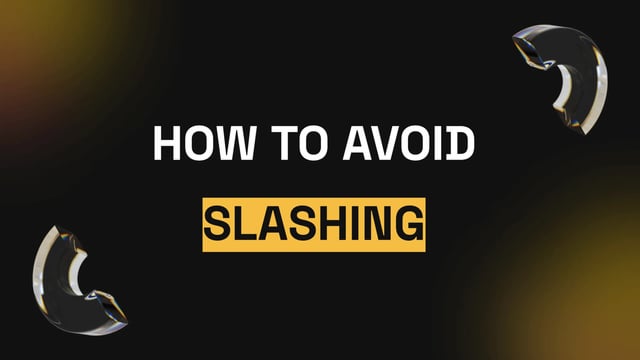ETH slashing explained

 |
Recently, we observed a notably long period, 60 days, without slashing incidents on the Ethereum mainnet. To date, 435 validators have been slashed, which is approximately 0.04% of the 1,024,056 active validators. This highlights node operators' diligence and the network's health. Let's delve into what slashing means and its implications for network security and validator responsibilities 👇 A majority of slashing events in #Ethereum happen unintentionally, often due to infra or DevOps errors rather than malicious actions. Validators can be slashed for several reasons, with the most common being attestation violations. Proposer violations, while still significant, occur less frequently. Reason: Attestation violation Double voting: An attester signs two different attestations in one epoch. Surround votes: An attester and sign an attestation that surrounds another one. Reason: Proposer violation Double block proposal: A block proposer signs two different blocks for the same slot. Slashing in the #Ethereum network leads to the forceful removal of a validator and the loss of some of its staked ETH. The latter-mentioned is a severe penalty of 1 ETH (1/32 of the slashed validator's effective balance, which is currently 32 ETH) ****is imposed just after a validator commits slashable offences and is immediately burned. Then, a 36-day removal period begins before the stake can be withdrawn. During this removal period, the validator's stake gradually bleeds away as part of another penalty, caused by the fact that a slashed validator continues to receive attestations to sign during these 36 days but can’t fulfil its duties and thus also receives attestation penalties. With 1.03m active validators as of today, the slashed validator will lose ~6,800 GWei per epoch or ~0.056 ETH accumulated over 36 days of the removal period (8192 epochs). At the mid-point (day 18), an additional penalty is applied whose magnitude scales with the total staked ether of all slashed validators in the 18 days prior to and after the slashing event. This means that when more validators are slashed, the magnitude of the slash increases more. This penalty is called the correlation penalty. The maximum slash is the full effective balance of all slashed validators. Conversely, a single, isolated slashing event results in only burning a small portion of the validator's stake. It's crucial for validators to understand all risks and take precautions to avoid unintentional slashing. To mitigate the risk of slashing, those running multiple validators, should focus on four key areas: 🔹 Dedicated DevOps Team: a specialized team to manage operations, ensuring that systems are running smoothly and securely. 🔹 Continuous Monitoring Solutions: tools and systems to monitor network activity and performance, enabling them to detect and respond to potential issues promptly. 🔹 Best Practices Development: a set of best practices to minimize the risk of errors or malicious activities that could lead to slashing. 🔹 Risk Containment Measures: a set of measures to contain potential risks, such as limiting exposure to certain activities or implementing fail-safes. For advanced tips on preventing slashing, check out our article: https://everstake.one/blog/what-validators-do-to-prevent-slashing-in-ethereum To add, Everstake has had zero slashing events since Ethereum PoS genesis in December 2020. Take a look at one of our first Ethereum operators, having been run for 4 years already, and currently, we run 21,000 active validators. Our 0.1+ ETH staking pool is a solution enabling you to stake amounts under 32 $ETH and earn rewards. Find more: https://everstake.one/link/stake-ethereum submitted by /u/irina_everstake |